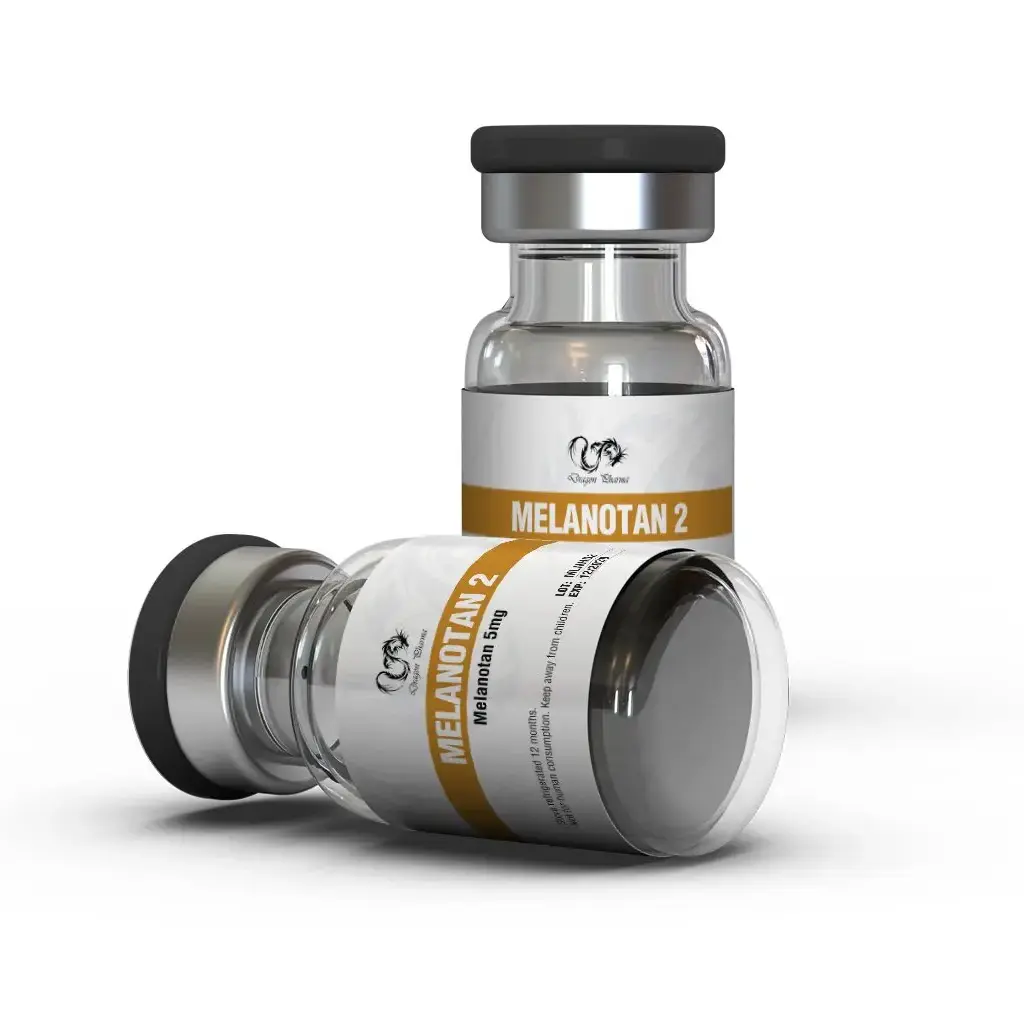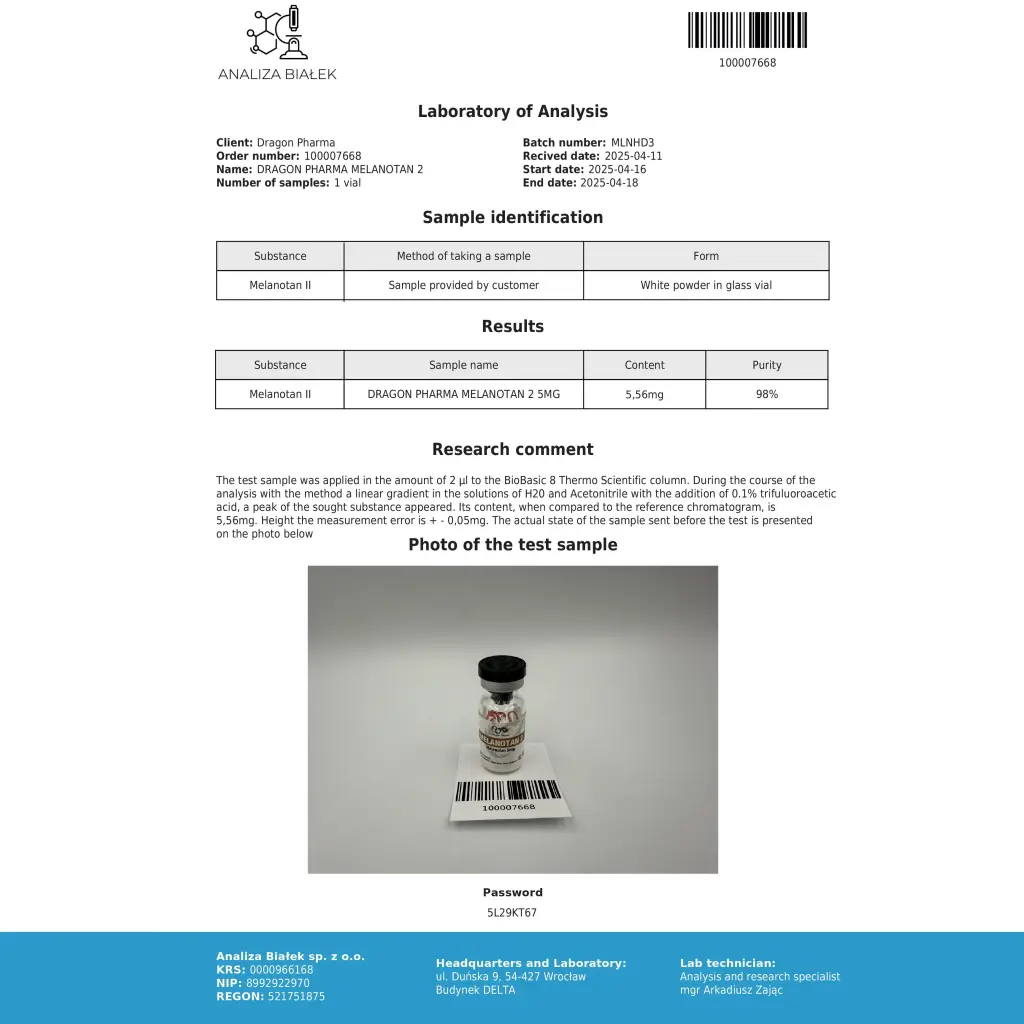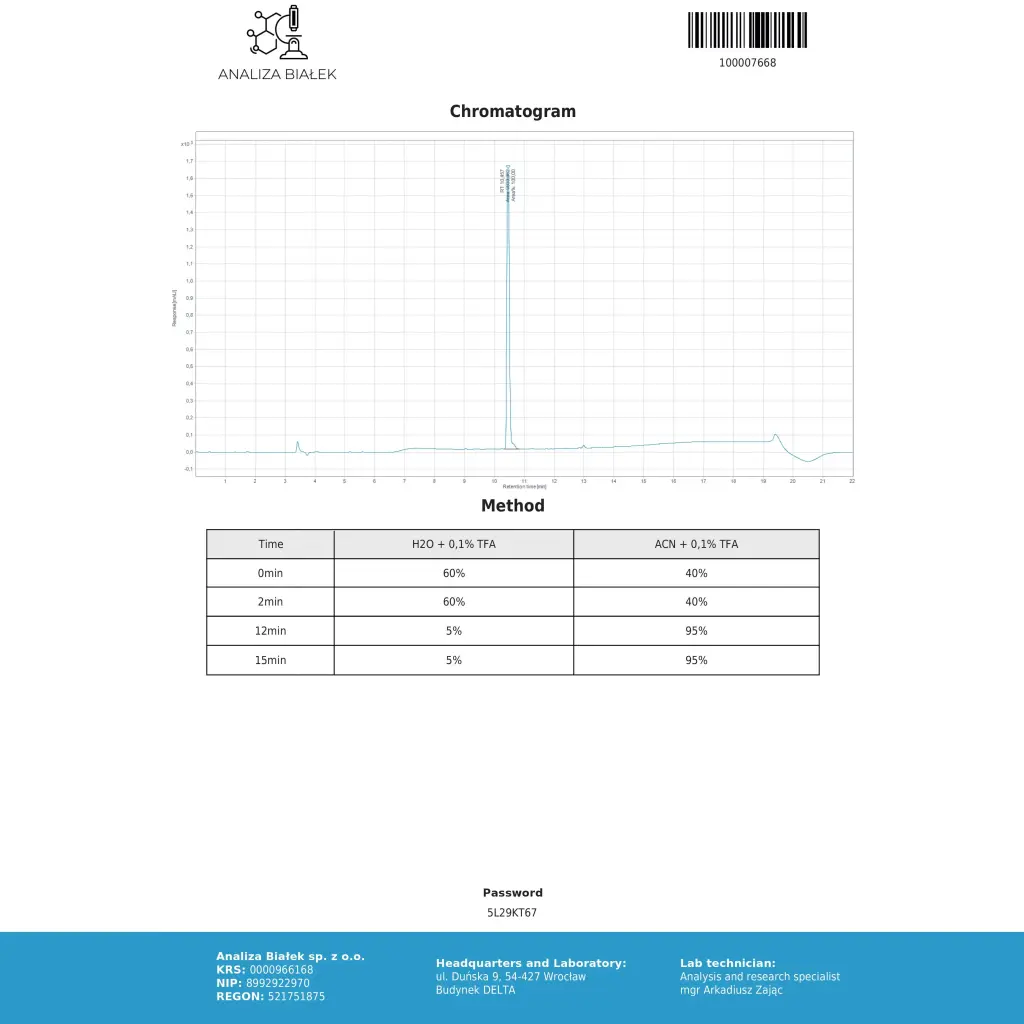





Manufacturer: Dragon Pharma, Europe
Substance: Melanotan
Pack: 5mg, vial
Melanotan peptide is a synthetic analog of the naturally occurring hormone alpha-melanocyte-stimulating hormone (α-MSH), which plays a crucial role in regulating skin pigmentation. Developed initially in the late 20th century, Melanotan was created to explore potential therapeutic applications, particularly for conditions such as vitiligo and other pigmentation disorders. Its primary function is to stimulate the production of melanin, the pigment responsible for skin color, thereby promoting a tanning effect without the need for prolonged sun exposure.
The emergence of Melanotan as a peptide supplement gained popularity in the early 2000s, especially within online communities seeking a safer alternative to tanning beds and excessive sunbathing. It was initially synthesized by researchers aiming to understand and manipulate pigmentation pathways, but its potential for cosmetic enhancement quickly captured public interest. Despite its promising effects, Melanotan's use outside of clinical settings remains controversial due to limited regulatory approval and potential health risks.
Today, Melanotan peptides are available through various channels, often marketed as a means to achieve a tan more quickly and with less UV exposure. However, medical professionals advise caution, emphasizing the importance of consulting healthcare providers before considering its use. As research continues, the peptide's safety profile and therapeutic potential are subjects of ongoing scientific investigation, highlighting the complex journey from laboratory discovery to potential mainstream application.
Melanotan 1 and Melanotan 2 are synthetic peptides designed to stimulate melanin production in the skin, offering a means to achieve a tanned appearance without prolonged sun exposure. Despite their similar purpose, these compounds differ significantly in their structure, potency, and potential side effects.
Melanotan 1, also known as Afamelanotide, was developed primarily for medical applications, such as treating conditions like erythropoietic protoporphyria, a disorder that causes extreme sensitivity to sunlight. It is characterized by a more selective activation of melanocortin receptors, leading to a gradual and natural-looking tan. Its administration typically results in fewer side effects, making it a preferred choice for those seeking a safer option.
In contrast, Melanotan 2 is a more potent and versatile peptide that not only stimulates melanin production but also influences appetite and sexual function due to its broader receptor activity. It tends to produce a faster and darker tan compared to Melanotan 1. However, this increased potency is often accompanied by a higher risk of adverse effects, such as nausea, flushing, increased libido, and, in some cases, more serious side effects like melanomas or other skin abnormalities.
In summary, while both Melanotan 1 and Melanotan 2 serve to enhance skin pigmentation, Melanotan 1 is generally considered safer and more targeted, suitable for medical use and those prioritizing safety.
Melanotan 2 offers a more rapid and intense tanning effect but carries a higher risk profile. Individuals considering these peptides should consult healthcare professionals to understand the potential benefits and risks associated with each.
Please log in to write Melanotan 2 (5mg) review.